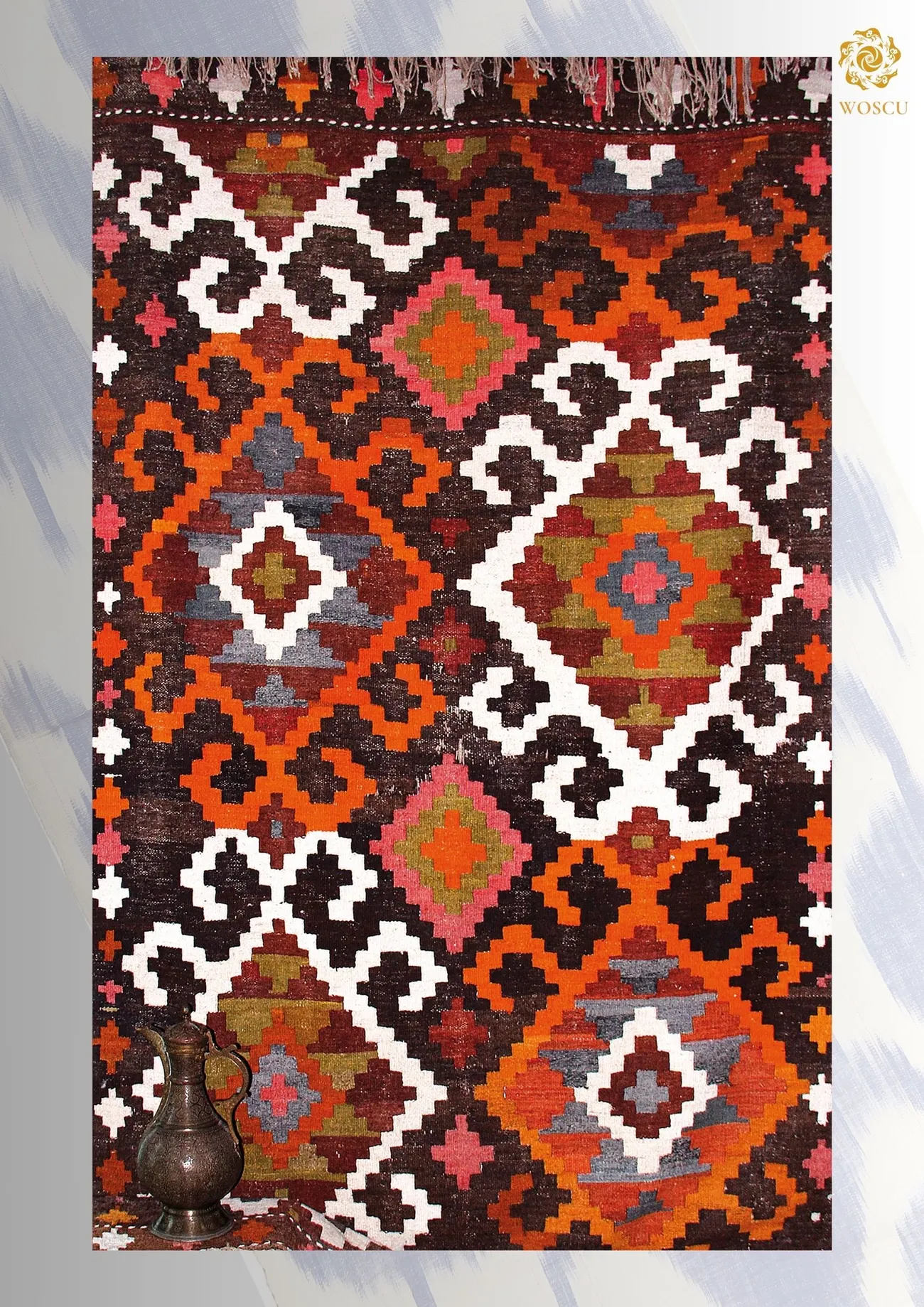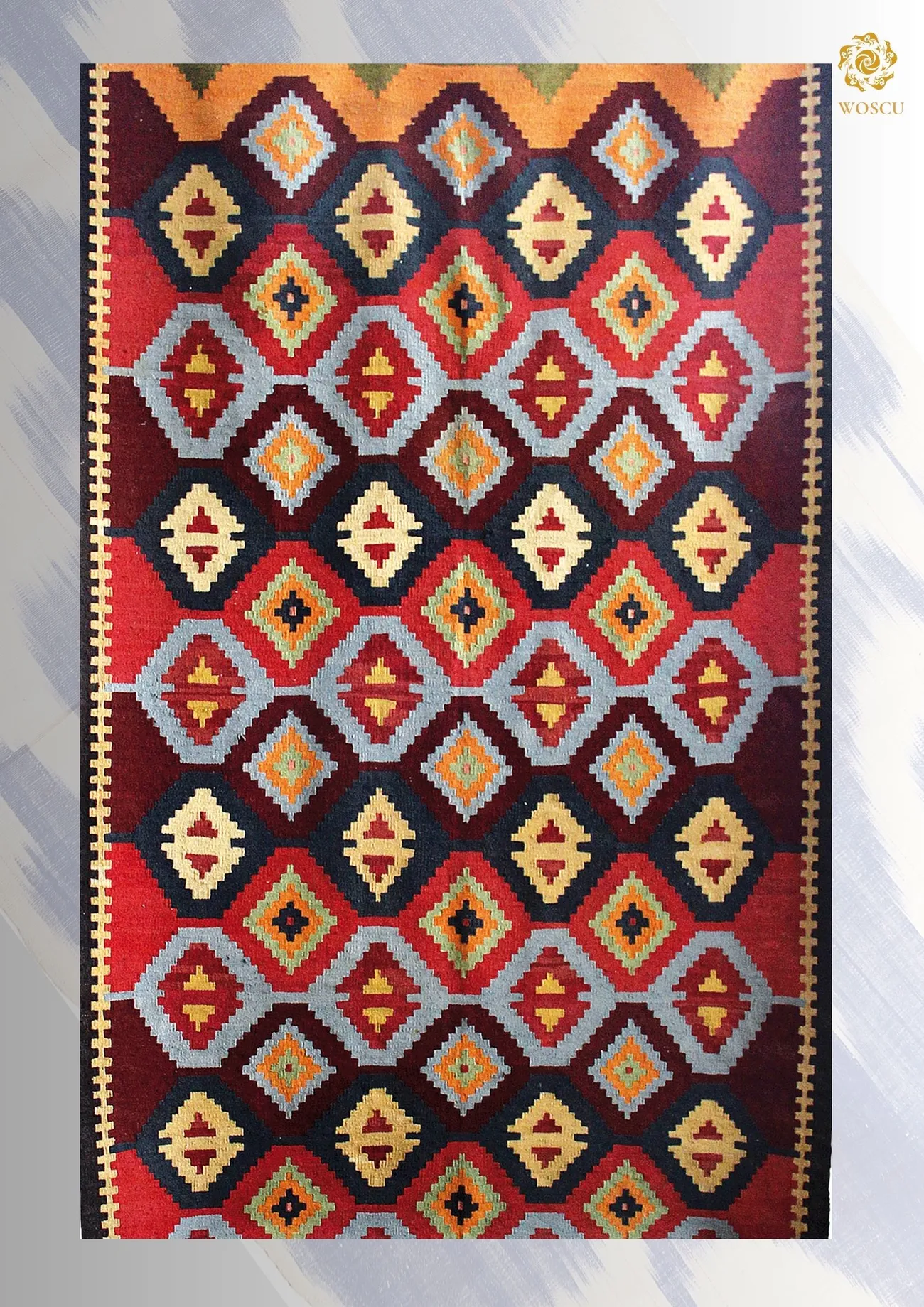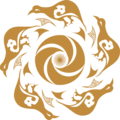These are pile and woollen carpets, khurjin-packs, bags for storing household items and clothes. In turn, pile carpets are divided into short-pile carpets produced in Andijan, and long-pile Samarkand julkhirs (literally bear skin). Carpet weaving was an integral part of domestic women’s needlework and was prevalent mainly in the life of cattlemen.
Carpets of the Kirghiz from the Andijan region – khydyrsha are very interesting. They are characterized by a red and blue colour scale and characteristic combinations of rhomboid medallions in combination with stylized images of ram horns. Carpet weaving of Qashqadaryo and Surxondaryo is represented by pile-free carpets. In these areas, such products as arabi, kohma, terme, gajari, takr gilam, kiz gilam (girl’s carpet) and okenli were traditionally woven. The latter type is made in a mixed technique: the gajari stripes were combined with stripes decorated with embroidery. Such carpets were an indispensable part of the dowry.
You can learn more about this topic in the book-album “The Collection of the State Museum of Arts of Uzbekistan” (Volume XIII) from the series “Cultural legacy of Uzbekistan in the world collections”.
The general sponsor of the project is the oilfield services company Eriell-Group.


